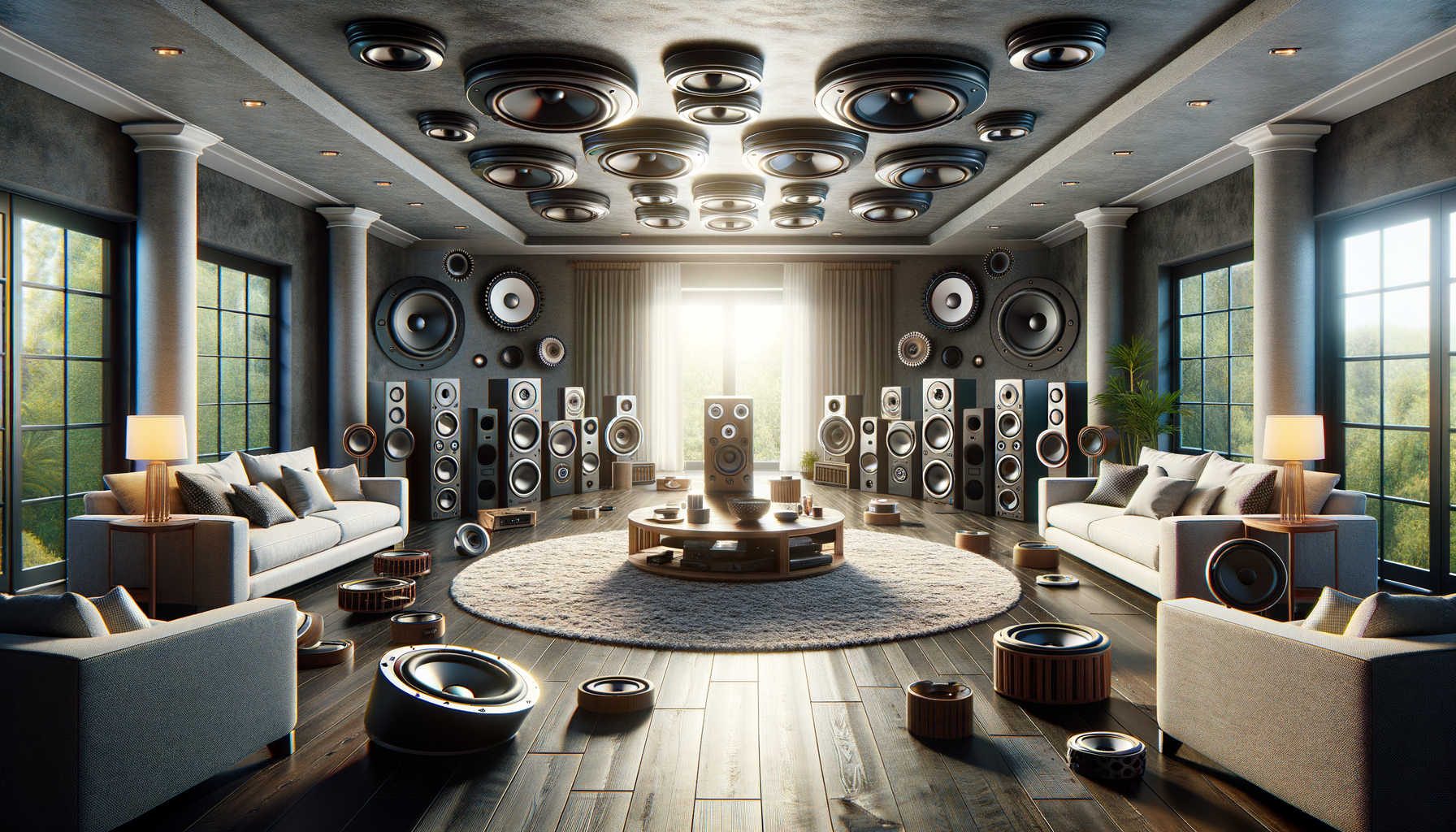Understanding Speaker Types and Their Uses
Speakers come in various shapes and sizes, each designed for specific purposes. Understanding these types can help you make an informed decision about which speaker will suit your needs. The most common types include bookshelf speakers, floor-standing speakers, and soundbars, each offering unique advantages.
Bookshelf speakers are compact and versatile, making them ideal for smaller spaces. They deliver impressive sound quality despite their size, suitable for music enthusiasts who need a space-saving option. Floor-standing speakers, on the other hand, are larger and can deliver a more powerful sound, making them perfect for home theaters or large living rooms. Soundbars are a popular choice for enhancing TV audio, offering a sleek design that fits neatly under a television.
Additionally, portable Bluetooth speakers have gained popularity due to their convenience and ability to provide quality sound on the go. Each speaker type has specific features that cater to different audio needs, ensuring there’s an option for every listener.
Key Features to Consider When Choosing a Speaker
When selecting a speaker, several key features should be considered to ensure you get the most out of your audio experience. These features include sound quality, connectivity options, and design.
Sound quality is paramount and is influenced by factors like frequency response, sensitivity, and power handling. A wide frequency response range allows the speaker to reproduce a broader spectrum of sounds, while higher sensitivity means the speaker can produce louder sound with less power. Power handling indicates the maximum power level a speaker can handle without distortion.
Connectivity options are also essential. Modern speakers offer various ways to connect, including Bluetooth, Wi-Fi, and traditional wired connections. Bluetooth and Wi-Fi speakers provide the convenience of wireless streaming, while wired connections can offer more stable audio quality.
Design and aesthetics may also play a role in your decision. Speakers come in different styles, from sleek and modern to classic and traditional, allowing you to choose one that complements your home decor.
Comparing Speaker Brands and Models
Choosing a speaker often involves comparing different brands and models, each offering unique features and sound characteristics. Some brands are renowned for their exceptional quality and innovative technology, while others are known for affordability and value.
For instance, some brands focus on delivering high-fidelity sound with advanced features such as voice assistants and multi-room audio capabilities. Others may prioritize robust build quality and durability, ensuring their speakers can withstand various environmental conditions.
When comparing models, consider factors such as customer reviews, expert ratings, and warranty options. Reviews provide insights into real-world performance, while expert ratings can highlight technical strengths and weaknesses. Warranty options offer peace of mind, ensuring your investment is protected against potential defects.
Ultimately, the choice will depend on your specific needs, preferences, and budget. By carefully evaluating these factors, you can find a speaker that offers the right balance of quality, features, and price.
Setting Up Your Speakers for Optimal Sound
Once you’ve chosen your speakers, setting them up correctly is crucial to achieving optimal sound quality. Proper placement and calibration can significantly enhance your listening experience.
For bookshelf and floor-standing speakers, placement is key. Position them at ear level and ensure they are equidistant from the listening area for balanced sound. Avoid placing speakers too close to walls, as this can cause unwanted bass resonance.
Soundbars should be centered under the TV and at ear level if possible. Many soundbars come with subwoofers that can be placed anywhere in the room, as low frequencies are omnidirectional.
Calibration tools, often included with home theater systems, can help optimize sound by adjusting settings based on room acoustics. These tools analyze the room and automatically adjust speaker levels and delays to ensure a cohesive sound stage.
By following these guidelines, you can ensure your speakers deliver the sound quality they were designed for, providing an immersive audio experience.
Maintaining and Caring for Your Speakers
Maintaining your speakers is essential for longevity and consistent performance. Regular cleaning and proper handling can prevent damage and preserve sound quality.
Dust and dirt can accumulate on speaker surfaces and grills, potentially affecting sound quality. Use a soft, dry cloth to clean the exterior, and a vacuum with a brush attachment for the grills. Avoid using harsh chemicals or abrasive materials that could damage the finish.
Speakers should be kept in a stable environment, away from extreme temperatures and humidity, which can harm components. If possible, use speaker stands to minimize vibrations and protect them from accidental bumps or spills.
Additionally, regularly check cables and connections for wear and tear. Faulty connections can lead to audio issues, so replace any damaged cables promptly.
By taking these simple steps, you can extend the life of your speakers and ensure they continue to deliver outstanding sound.








